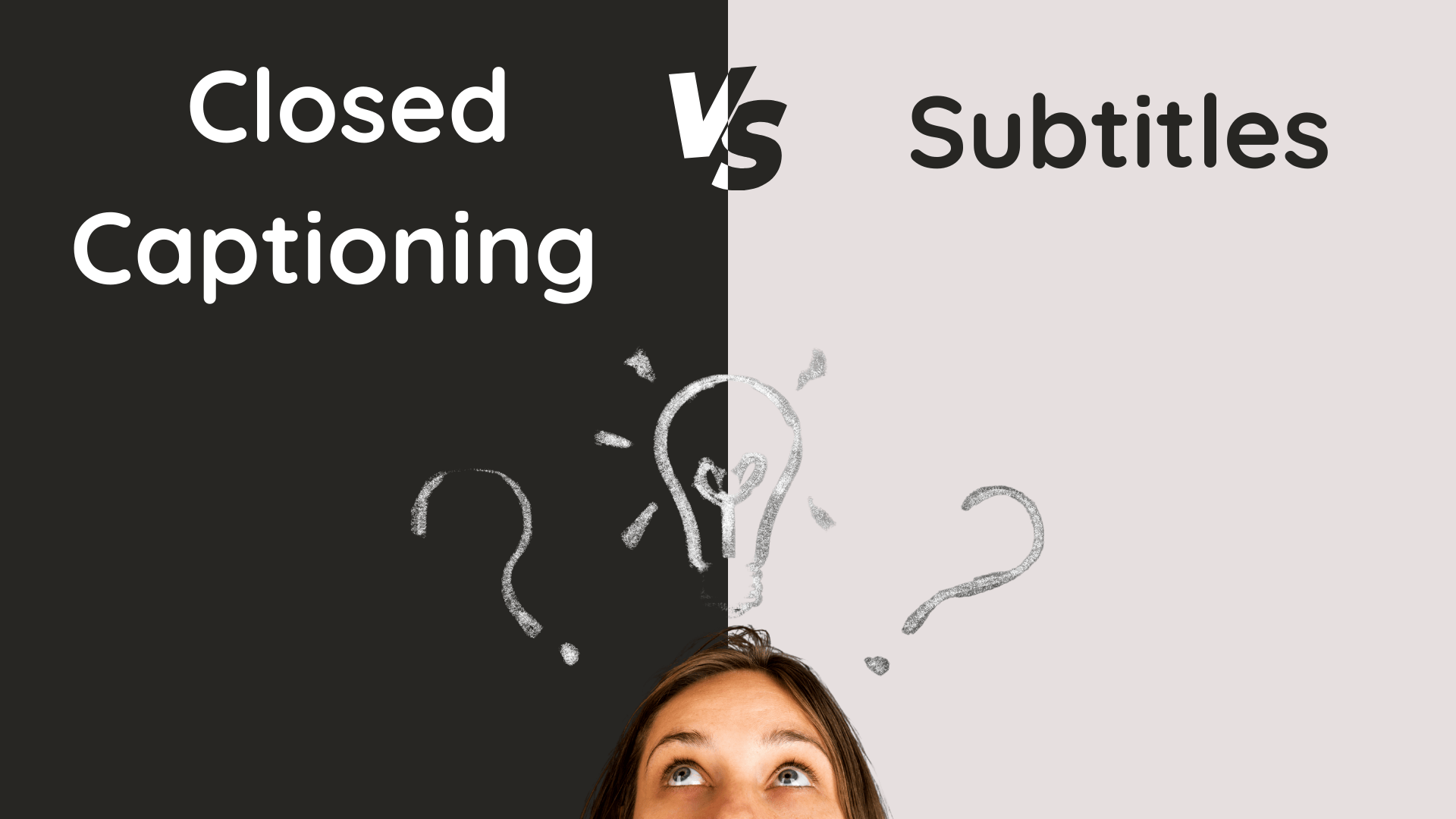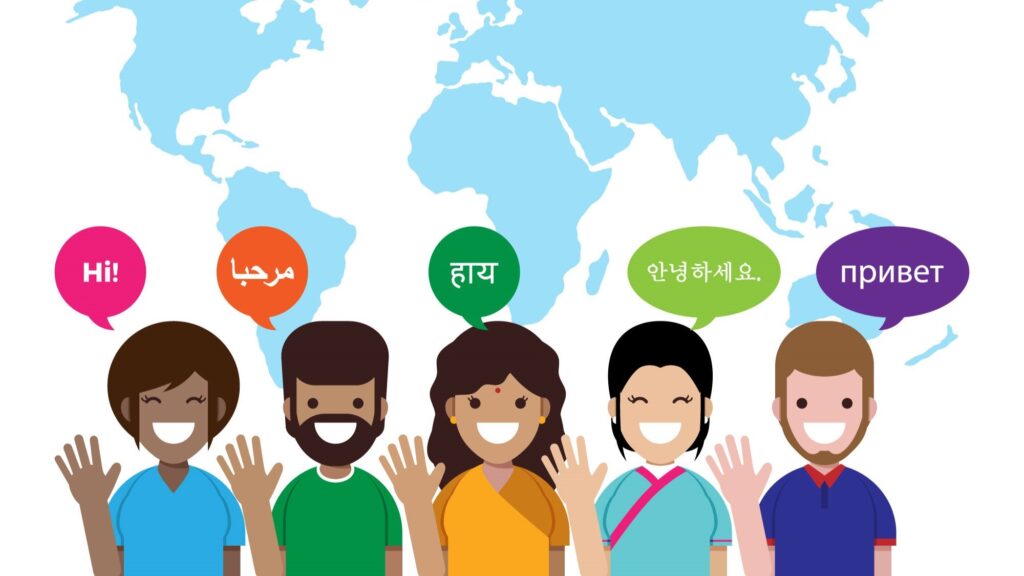
If you have ever wondered about the distinction between Closed Captioning vs Subtitles, you’re not alone. These terms are often used interchangeably, but they serve different purposes. Both enhance video content by providing on-screen text, but the way they do it—and the audiences they serve—are not the same.
At VerboLabs, we specialize in subtitling services and closed captioning solutions that help brands, businesses, and entertainment platforms expand their reach. Understanding the difference between the two is crucial to choosing the right service for your needs—whether you’re targeting global audiences, meeting accessibility standards, or making your video content more engaging.
What is Closed Captioning?
Closed captioning (CC) is a textual representation of all the audio content in a video. It goes beyond dialogue and includes background noises, speaker identification, sound effects, and even music cues.
For example:
- In a Netflix documentary, closed captions might read:
- [Door creaks open]
- John: “We need to move now.”
- [Dramatic music playing]
- [Door creaks open]
This makes the content fully accessible for individuals with hearing impairments, ensuring they don’t miss any important sound elements. In fact, in many countries like the US, closed captions are a legal requirement for TV shows, movies, and online media under accessibility guidelines.
Where closed captioning is important:
- Businesses: Corporate training videos often require CC to comply with accessibility laws.
- Entertainment: Streaming platforms like Disney+ and Hulu use CC so deaf and hard-of-hearing viewers can enjoy shows equally.
- Offices: Internal communication videos or town halls may need CC to ensure inclusivity in diverse workplaces.
What are Subtitles?
Subtitles, on the other hand, are designed to translate spoken language into text. Their primary purpose is to make content understandable for people who do not speak the original language.
For example:
- A Spanish movie streamed in the US may include English subtitles so viewers can follow along.
- An English YouTube video could include French subtitles to reach audiences in France and Canada.
Unlike closed captions, subtitles typically do not include non-speech elements like [phone ringing] or [laughter] unless it is essential to the dialogue’s meaning.
Where subtitles are important:
- Entertainment: International films (like Parasite or RRR) use subtitles to win Oscars and global recognition.
- Businesses: Brands launching marketing campaigns in foreign countries add subtitles to TV commercials and social media ads.
- Education: Online learning platforms often provide multilingual subtitles to serve global students.
At VerboLabs, our expert subtitling services help companies localize their content in multiple languages, bridging the gap between creators and global audiences.
Key Differences Between Closed Captioning and Subtitles
Here’s a side-by-side look at how Closed Captioning vs Subtitles differ and why choosing the right option matters for your audience:
- Audience Focus
- Closed Captioning (CC): Serves people with hearing impairments.
- Subtitles: Serve people who don’t understand the original spoken language.
- Closed Captioning (CC): Serves people with hearing impairments.
- Content Coverage
- CC: Includes dialogue, background sounds, and speaker labels.
- Subtitles: Translate only spoken words.
- CC: Includes dialogue, background sounds, and speaker labels.
- Accessibility Features
- CC: Essential for inclusivity and required in many regions by law.
- Subtitles: Essential for breaking language barriers in global communication.
- CC: Essential for inclusivity and required in many regions by law.
- Context of Use
- CC: Widely used in compliance-heavy industries (corporate, government, broadcasting).
- Subtitles: Used in films, OTT platforms, global marketing campaigns, and e-learning.
- CC: Widely used in compliance-heavy industries (corporate, government, broadcasting).
- Notation
- CC: Denoted as “CC” or represented with a small “CC” icon.
- Subtitles: Usually marked as “Subtitles” or “Sub.”
- CC: Denoted as “CC” or represented with a small “CC” icon.
Real-World Examples of Usage
- Netflix uses both: closed captions for accessibility and subtitles to make international content global.
- Coursera & Udemy: Educational platforms rely heavily on subtitles to make learning accessible worldwide.
- Corporate Giants (like Microsoft & Google): Internal training modules include CC to meet inclusivity standards.
- YouTube Creators: Add subtitles to reach global audiences and CC to make videos more engaging and compliant.
Closed Captions vs Subtitles: Which One Does Your Brand Need?
Choosing between closed captioning and subtitles depends on your goals:
- If you’re prioritizing accessibility and want to make sure your videos are inclusive for the deaf and hard-of-hearing community, → Closed Captioning is essential.
- If you’re focused on global reach, breaking into new markets, and connecting with multilingual audiences → Subtitles are the way to go.
In many cases, the best approach is using both together. For example, a multinational company releasing a training video may use closed captions for employees with hearing impairments and subtitles for international teams.
Why Partner with VerboLabs for Subtitling and Closed Captioning?

At VerboLabs, we don’t just add text to videos—we help brands expand their reach, build inclusivity, and create impact. Our subtitling services and closed captioning solutions are:
- Accurate & Culturally Fluent: Native linguists ensure the text fits perfectly with cultural context.
- Industry-Specific: From OTT entertainment to corporate training, we tailor captions and subtitles to your niche.
- Global Reach: With 120+ language options, your content can cross borders seamlessly.
- Trusted by 1,000+ Brands: Our clients span media, entertainment, corporate, and education sectors worldwide.
Final Thoughts
Both closed captioning and subtitles play a vital role in making video content inclusive, accessible, and globally appealing. The choice isn’t about which is “better,” but about which aligns with your brand’s goals. Accessibility? Go with closed captioning. Global reach? Subtitles are key.
For many businesses, the debate of Closed Captioning vs Subtitles often ends with choosing a combination of both. That’s where VerboLabs comes in—helping you create videos that resonate across cultures, languages, and audiences.
Ready to expand your content’s reach and impact? Contact VerboLabs Subtitling Services today and make your brand truly global.

Make your videos global and inclusive—partner with VerboLabs today!



